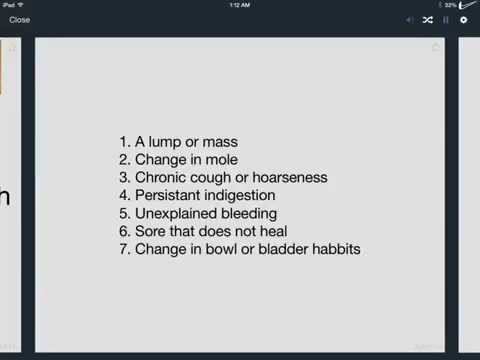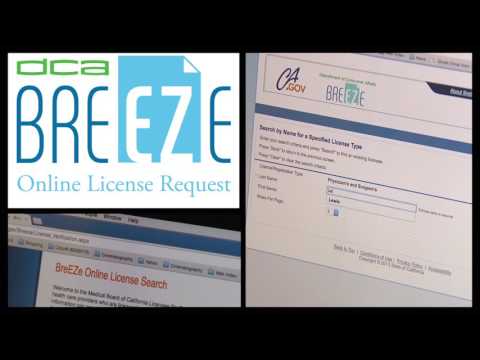What are the Duties of a Certified Medical Assistant?
Contents
A certified medical assistant (CMA) is a multi-skilled allied health professional who supports the work of physicians and other health care providers. CMAs typically work in outpatient settings, such as clinics and doctor’s offices, and perform a variety of tasks to keep the office running smoothly. These duties may include taking and recording patient medical histories, scheduling appointments, preparing patients for examinations, and assisting with diagnostic procedures. In some states, CMAs may also be allowed to perform certain tasks
Checkout this video:
Job Description
The medical assistant job description is quite diverse as these professionals perform both clinical and administrative tasks. They work alongside physicians, nurses and other medical staff in hospitals, clinics and private practices. clinically, they may take patient vital signs, collect laboratory specimens, perform basic laboratory tests, prepare patients for examinations and administer medications as directed by a physician. administratively, they may schedule appointments, take payments, maintain medical records and deal with insurance companies.
Duties
Certified Medical assistants (CMAs) are multi-skilled health care professionals specifically trained to work in outpatient facilities such as medical offices and clinics. Their duties include administrative tasks, clinical tasks, and patient education. Although their job description varies by state, medical assistants must graduate from an accredited postsecondary institution and pass a national exam to earn certification. The majority of CMAs have postsecondary education certificates, although some receive diplomas or associate’s degrees.
Most states have no specific regulations regarding the supervision of CMAs, so their duties and scope of practice are largely determined by the supervising physician. However, all CMAs must be able to perform basic administrative functions such as greeting patients, updating and filing patient Medical records scheduling appointments, answering phones, and handling billing and insurance paperwork. They may also be responsible for maintaining office supplies and equipment, preparing examination rooms before patient visits, ensuring that sterilization procedures are followed correctly, assisting with patient exams or procedures when needed, and helping to remove sutures or change wound dressings. In addition to administrative tasks, CMAs often perform clinical tasks such as taking vital signs (temperature, blood pressure, heart rate, respiratory rate), preparing patients for examination by removing clothing and draping them with a cloth, collecting urine or stool samples for testing when needed, drawing blood for laboratory tests using needles or venipuncture devices,, performing electrocardiogram (EKG) or phlebotomy procedures when necessary,, assisting with minor office surgery as directed by the supervising physician,, removing sutures or changing wound dressings,, applying non-medicated ointments or creams as directed.. In some states,, CMAs may administer medications orally,, topically,, intramuscularly (IM),or subcutaneously (SQ).
In addition to performing administrative and clinical tasks,, certified medical assistants must also be able to educate patients about their treatment plans., This includes answering questions about medications,. diet,, test results supply purchases ,or other self-care instructions. They may also provide guidance on diet modifications exercise programs ,or disease prevention . For example ,a CMA may teach a diabetic patient how to monitor his or her blood sugar levels .
Responsibilities
Most medical assistants have a postsecondary education from a community college, technical school, or vocational school. Although not required, some states have certification programs for medical assistants. Duties of medical assistants vary from office to office, but most perform administrative and clinical tasks.
Clinical duties may include taking and recording patients’ vital signs and medical histories, preparing patients for examination, drawing blood, and administering medications as directed by a physician. Medical assistants also may schedule appointments, receive payments, code and file insurance forms, & perform other administrative duties.
Some states allow medical assistants to perform more advanced procedures under the supervision of a physician. These expanded functions might include removing sutures (stitches), applying electrocardiography or sonography equipment to aid in diagnosis, or assisting in minor surgery. Other state laws allow medical assistants to administer medications only if they have completed an accredited medication aide training program.
Qualifications
In order to become a certified medical assistant, one must complete an accredited medical assistant program and pass a certification exam such as the Certified Medical Assistant (CMA) exam administered by the American Association of Medical Assistants (AAMA). Although not all states regulate medical assistants, many employers prefer to hire those who are certified. Certified medical assistants typically have an advantage over non-certified medical assistants when competing for jobs. In addition, some states may require certified medical assistants to complete continuing education credits in order to maintain their certification.
Medical assistants perform a variety of administrative and clinical tasks to support the work of physicians and other health professionals. Their duties vary depending on the size and location of their employer, but they typically include taking and recording patients’ vital signs, updating patients’ medical records scheduling appointments, assisting with minor office surgeries, handling correspondence, billing and coding insurance forms, and ordering supplies.
Skills
Some specific skills required of a medical assistant include:
-Answering phone calls,
-Scheduling appointments,
-Greeting patients,
-Updating medical records,
-Coding and billing insurance forms,
-preparing patients for examination,
-Assisting the physician during the examination,
-Drawing blood, giving injections, and taking X rays.
Salary
The median certified medical assistant salary in the United States is $33,610, according to the Bureau of Labor Statistics. This means that half of all certified medical assistants earn more than this amount, and half earn less. The top 10 percent of earners make more than $46,980 per year, while the bottom 10 percent make less than $24,540 per year. Your specific salary will depend on a number of factors, including your experience level, employer type, geographic location, and more.
Employment Outlook
Employment of medical assistants is projected to grow 19 percent from 2019 to 2029, much faster than the average for all occupations. The aging baby-boom population will continue to need health care services. As their health care needs grow, demand for preventive medical services will increase, and demand for physician assistant services will grow as well.
Education & Training
Most medical assistants have postsecondary education such as a certificate, although some have college degrees in medical assisting. Programs typically last from 1 to 2 years and lead to a certificate or diploma. Some community colleges offer 2-year programs that lead to an associate degree in medical assisting.
Most programs include courses in office procedures, anatomy, physiology, Medical Terminology and computer applications. Many programs also include an internship or externship in which students gain hands-on experience in a real office setting.
Certification
There are voluntary certification programs for medical assistants, administered by several different organizations. The two main certifying bodies are the American Association of Medical Assistants (AAMA) and the National Healthcare Association (NHA). There are also several state-level certifying bodies. Eligibility requirements for the AAMA’s Certified Medical Assistant (CMA) exam include completion of an accredited medical assisting program and passing a skills test. The NHA’s Certified Clinical Medical Assistant (CCMA) exam is open to anyone who has graduated from a medical assisting program, regardless of whether it was accredited. Both exams include a written component.
Career Paths
Most medical assistants have at least a high school diploma, although some have completed postsecondary education, and most states require certification. Although certification is not required in all states, employers usually prefer to hire certified medical assistants. The Certificate of Medical Assisting (CMA) administered by the Certification Commission for Medical Assistants (CCMA) and the Registered Medical Assistant (RMA) credential administered by the American Medical Technologists (AMT) are the two most common certifications for medical assistants.
Medical assistants typically complete a one-year accredited program that leads to a certificate or diploma. Programs typically include courses in medical terminology, transcription, office procedures, insurance processing, and medical law and ethics. Many programs also include an externship component, which gives students the opportunity to gain real-world experience in a medical setting.







